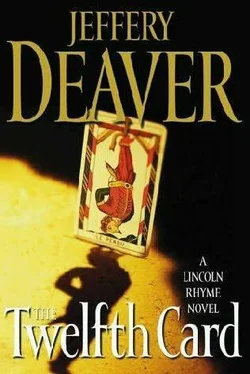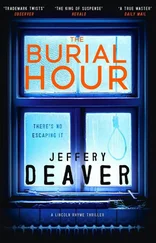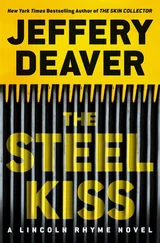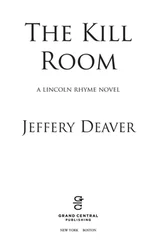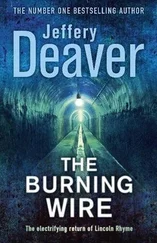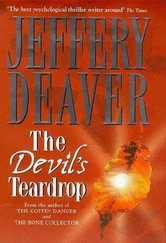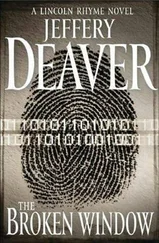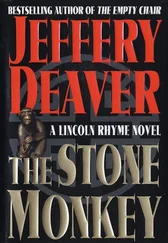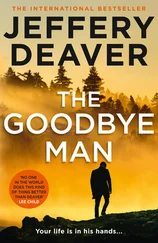Lon Sellitto was on the other end. He’d found the name of the building’s owner, a businessman who lived several blocks way. The man was on his way to the place to let them inside. Rhyme came on the phone a moment later and she told him what Yu had said.
“Good luck, bad luck,” he said, the scowl clear. “Well, I’ve ordered an S and S team there with SPR and ultrasound.”
Just then the owner of the building arrived, a short, balding man in a suit and white shirt open at the collar. Sachs disconnected the cell call with Rhyme and explained briefly to the man that they needed to examine the basement. He looked her up and down suspiciously then opened the basement door and stood back, crossing his arms, near Vegas. The police dog didn’t seem to like him very much.
A Chevy Blazer pulled up and three members of the NYPD Search and Surveillance Unit climbed out. S and S officers were a mixed breed of cop, engineer and scientist, whose job was to back up the tactical forces by locating perps and victims at scenes with telescopes, night vision imagers, infrared, microphones and other equipment. They nodded to the crime scene techs and then unloaded battered black suitcases, very much like the ones that held Sachs’s own crime scene equipment. The owner watched them with a frown.
The S and S officers walked down into the dank, chill basement, smelling of mold and fuel oil, followed by Sachs and the owner. They hooked up probes that resembled vacuum cleaner heads to their computerized equipment,
“The whole area?” one asked Sachs.
“Yup.”
“That’s not going to hurt anything, is it?” the owner asked.
“No, sir,” a tech replied.
They got to work. The men decided to use SPR first. Surface Penetrating Radar sent out radio waves and returned information on objects it struck, just like traditional radar on board a ship or airplane. The only difference was that SPR could go through objects like dirt and rubble. It was as fast as the speed of light and, unlike ultrasound, didn’t have to be in contact with the surface to get a reading.
For an hour they scanned the floor, clicking computer buttons, making notations, while Sachs stood to the side, trying not to tap her foot or fidget impatiently, figuring that it wouldn’t be good for the instrument’s readings.
After they’d swept the floor with the radar, the team consulted the unit’s computer screen and then, based on what they learned, walked around the floor again, touching the ultrasound sensor to the concrete in a half dozen areas they’d targeted as important.
When they were finished they called Sachs and Yu over to the computer, flipped through some images. The dark gray screen was unreadable to her: It was filled with blotches and streaks, many of which had small boxes of indecipherable numbers and letters beside them.
One of the techs said, “Most of these are what you’d expect under a building this age. Boulders, a bed of gravel, pockets of decayed wood. That’s a portion of a sewer here.” Pointing to part of the screen.
“There’s an easement for a storm drain that feeds into the main drain going to the Hudson,” Yu said. “That must be it.”
The owner leaned over his shoulder.
“You mind, sir?” Sachs grumbled. The man grudgingly stepped back.
The tech nodded. “But here…” He tapped a spot next to the back wall. “We got a ping but no hit.”
“A -?”
“When something comes back that the computer’s seen before, it suggests what it might be. But this was negative.”
Sachs saw only a less dark area on the dark screen.
“So we ran the ultrasound and got this.”
His partner typed in a command and a different screen appeared, one much lighter and with a clearer image on it: a rough ring, inside of which was a round, opaque object that seemed to have a strand of something coming off it. Filling the ring, in the space below the smaller object, was what appeared to be a pile of sticks or boards – maybe, Sachs speculated, a strongbox that had broken apart over the years.
One officer said, “The outer ring’s about twenty-four inches across. The inner one’s three-dimensional – a sphere. It’s eight, nine inches in diameter.”
“Is it close to the surface?”
“The slab’s about seven inches deep, and this thing’s about six to eight feet below that.”
“Where exactly?”
The man looked from the computer screen to the floor and back again. He walked over to a spot right beside the wall in the back of the basement, near the door that led outside. He drew a chalk mark. The object was right against the wall. Whoever had built the wall had missed it by only inches.
“I’m guessing it was a well or a cistern. Maybe a chimney.”
“What would it take to get through the concrete?” Sachs asked Yu.
“My permission,” said the owner. “Which you ain’t getting. You’re not breaking up my floor.”
“Sir,” Sachs said patiently, “this is police business.”
“Whatever that thing is, it’s mine.”
“Ownership isn’t the issue. It may be relevant to a police investigation.”
“Well, you’ll have to get a court order. I’m a lawyer. You’re not breaking up my floor.”
“It’s really important we find out what that is.”
“Important?” the man asked. “Why?”
“It has to do with a criminal case from a few years ago.”
“Few years?” the man said, picking up on the weakness of her case immediately. “How ‘few’?” He was probably a really good lawyer.
You lie to people like this and it comes back to get you. She said, “A hundred and forty. Give or take.”
He laughed. “This isn’t an investigation. This is the Discovery Channel. No jackhammer. Uh-uh.”
“A little cooperation here, sir?”
“Get a court order. I don’t have to cooperate until I’m forced to.”
“Then it’s not really cooperation, is it?” Sachs snapped back. She called Rhyme.
“What’s going on?” he asked.
She briefed him about what they’d found.
“An old strongbox in a well or cistern inside a burned-down building. Hiding places don’t get much better than that.” Rhyme asked for S and S to send him the images via wireless email. They did so.
“I’ve got the picture here, Sachs,” he said after a moment. “No clue what it is.”
She told him about the unconcerned citizen.
“And I’ll fight it,” the lawyer said, hearing the conversation. “I’ll appear before the magistrate myself. I know ’ em all. We ’re on a first-name basis.”
She heard Rhyme discussing the matter with Sellitto. When he came back on the line he wasn’t happy. “Lon’s going to try to get a warrant, but it’ll take time. And he’s not even sure the judge’d issue paper in a case like this.”
“Can’t I just clock this guy?” she muttered and hung up. She turned to the owner. “We’ll repair your floor. Perfectly.”
“I have tenants. They’ll complain. And I’ll have to deal with it. You won’t. You’ll be long gone.”
Sachs waved her hand in disgust, actually thinking about placing him under arrest for – well, for something – and then digging through the damn floor anyway. How long would a warrant take? Probably forever, she imagined, considering that judges needed a “compelling” interest in order to allow police to invade someone’s home.
Her phone rang again and she answered.
“Sachs,” Rhyme asked, “is that engineer fellow there?”
“David? Yeah. He’s right next to me.”
“I have a question.”
“What?”
“Ask him who owns the alleys?”
The answer, in this particular instance, though not all, was: the city. The lawyer owned only the footprint of the building itself and what was inside.
Читать дальше
